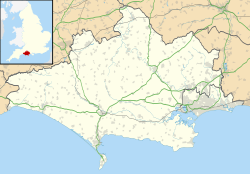 | |
Former name | Jet Heritage Museum |
|---|---|
| Established | May 1998 |
| Location | Merritown Lane, Hurn, Dorset |
| Coordinates | 50°46′33″N1°50′33″W / 50.7757°N 1.8426°W |
| Type | Aviation museum |
| Website | www |
The Bournemouth Aviation Museum is an aviation museum located next to Bournemouth International Airport, near the village of Hurn in Christchurch, England. It houses a number of aircraft, aero engines, cockpits, and a limited number of ground vehicles.
